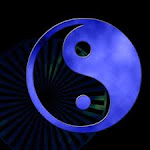How many hands can beat you? What's your position? Who are you up against?
I forgot this concept when I had JJ, in position, recently, in a live ring game. Dealt JJ the hand before and got an easy win. The gods must have been smiling, or smirking, when on the exact next hand I got JJ - again, called a small raise, everyone else folded, so I was heads up against a good, loose aggressive player. The flop went something like 952, rainbow, and he bet about half the pot and I called. The turn was something like a 7, he bets about half the pot, I raise the pot, he re-raises, and I go crazy stupid All-in and get called. He shows QQ, the river is a King.
What was I thinking? I wasn't!
You hold an over pair to the board, but it's not the nuts! The boards not scary, but you could be behind a set, even 2nd or third best set, yet alone the top set. You could be behind the three top pocket pairs that can beat you.
You could be way ahead of any other hand and up against a drawing hand, or NOT.
A "Way Ahead or Way Behind" situation requires the following:
• You are heads up, before or after the flop, and you at least have a pocket pair or paired the board on the flop.• You do not know whether you are ahead or behind?
• If you are ahead, your opponent has very few outs (typically two or three).
• If you are behind, you have very few outs.
Pot control is the key!
Controlling the size of the pot in your favor is crucial to your success as a poker player. The theory is simple: reduce your losses to a minimum and increase your winnings to a maximum.When you have hands on the extreme ends of the scale, putting this theory into practice is fairly easy - if you have the nuts, you pump the pot; if you have rags, you fold. According to the theory of pot control, you should be working to maximize your profit in this situation. Only a few of the possible starting hands will have your hand dominated here.
If you automatically fold every single time you're in this situation, you'll lose every pot. The amount you lose will only be equal to that of your preflop contributions. This is a small loss, but a guaranteed one nonetheless.
Before you can decide how to play the hand, you have to figure out which opposing hands are good for it, and which hands are bad for it. Any constant loss is a leak in your game; too many leaks and you'll cease to float.
The players with a hand better than yours will be wanting to extract maximum value from their hands as well. Oftentimes, unless you can discern a very good reason to do otherwise, you want to control the pot, and keep it small by betting and checking. Usually you want to play Small Ball.
Who's bluffing?
Players are less inclined to bluff at a small pot, helping to eliminate the risk of the worse hands stealing the pot away from you. It also allows you to make bluffs and moves with less risk. The smaller the pot is, the less money it takes to make a bluff at it.
Don't get greedy! It will ruin your game!
Your goal is to extract as much, if not more, value from the hands you beat as you give to the hands that beat you. The times you successfully bluff a stronger hand into folding should be enough to render your hand profitable.The most important concept to remember with a way ahead/way behind hand is that the only players willing to call a large bet will be the players who have you beat. For this reason you want to avoid large bets and large pots. Control the action, control the pot and wait for your spots to punish your opponents.
While "Way Ahead or Way Behind" confrontations are somewhat common, you must be careful to identify them correctly. If your opponent is semi-bluffing, for example, with eight, nine, or more outs, you must play far more aggressively. Only when you can be sure you are in a textbook "Way Ahead or Way Behind" situation can you afford the passive play that typically optimizes your results.
For the most part, poker is not an adrenaline-crazed action game, it's a patience game. The players who are able to control the pots, and play the grind, are the ones who still have chips left when the perfect situation arises.
Play strong, play smart and when you are dealt the nuts,
milk it for all it's worth.
http://www.pokerlistings.com/search?searchString=trouble+spots






















